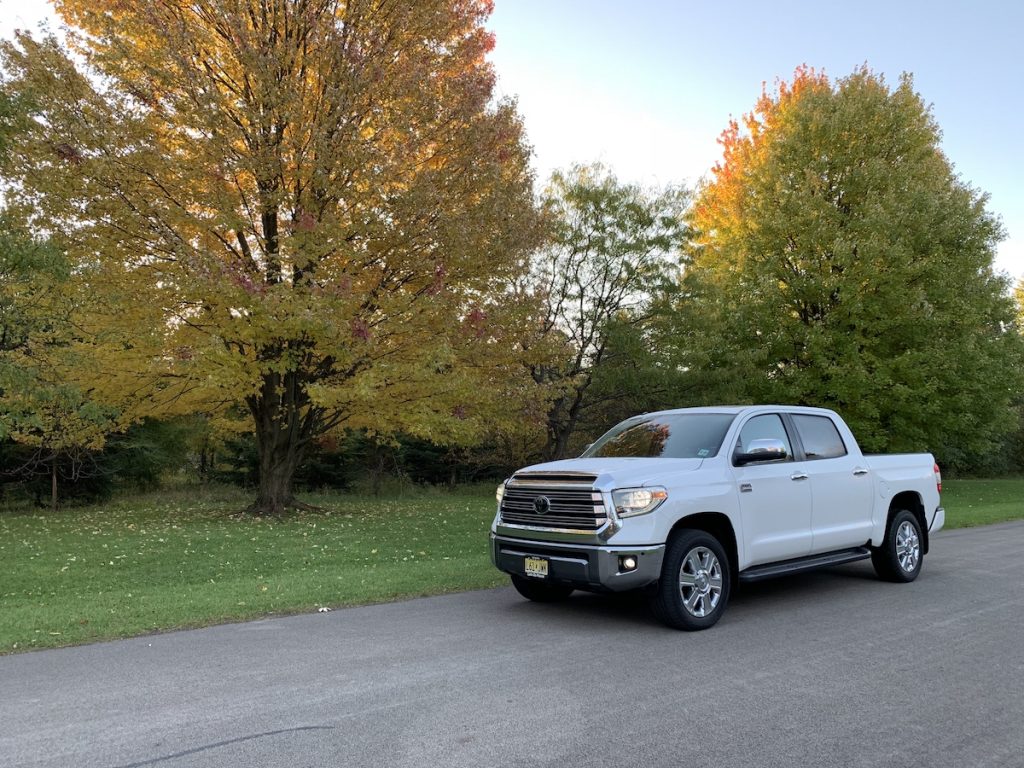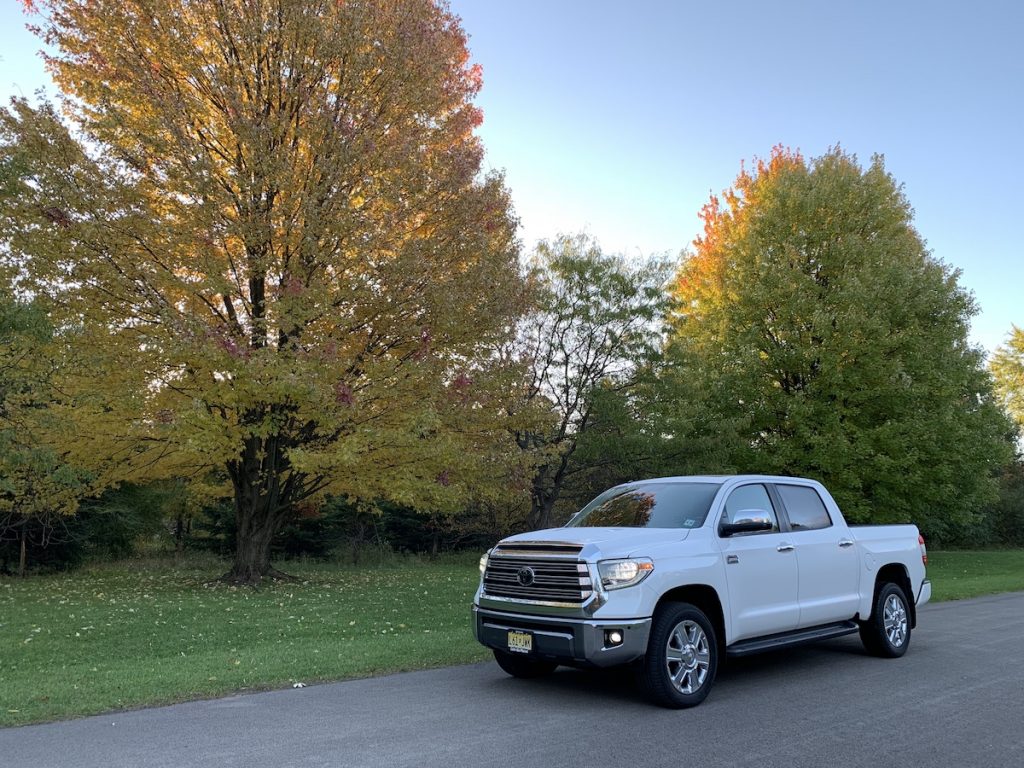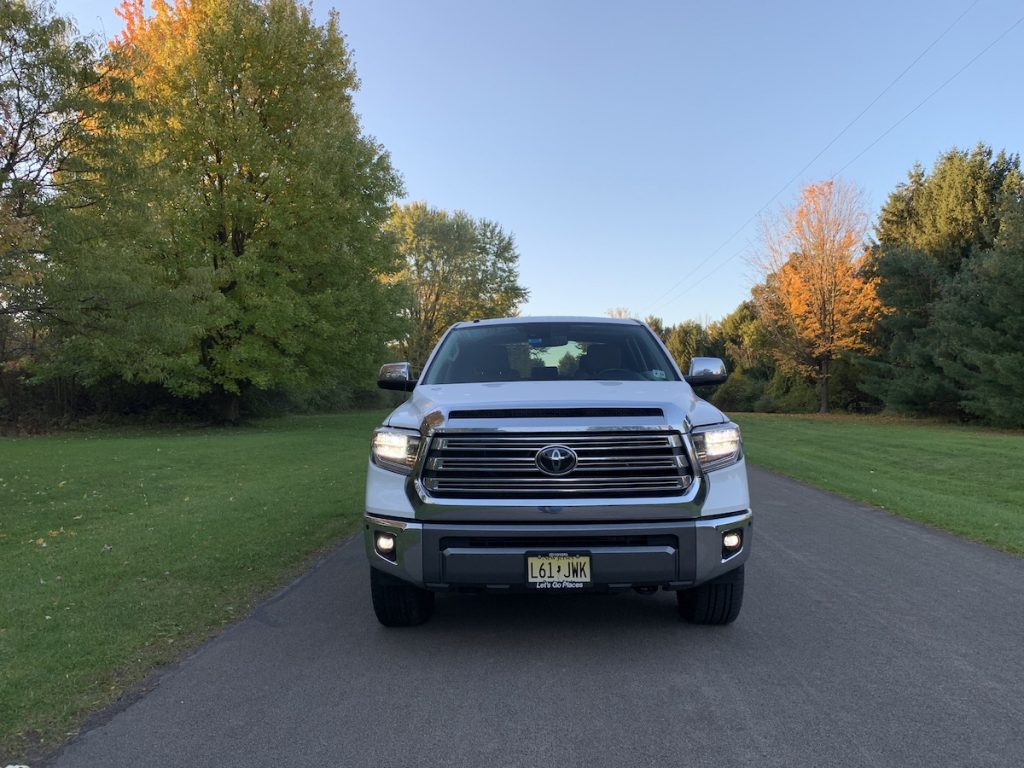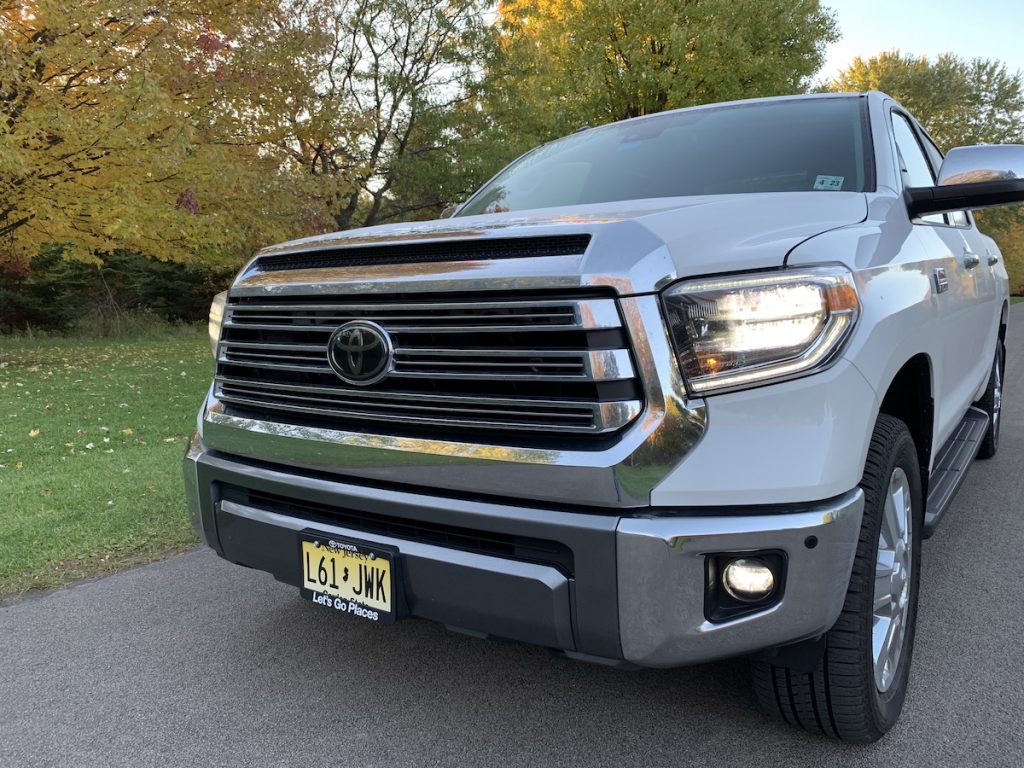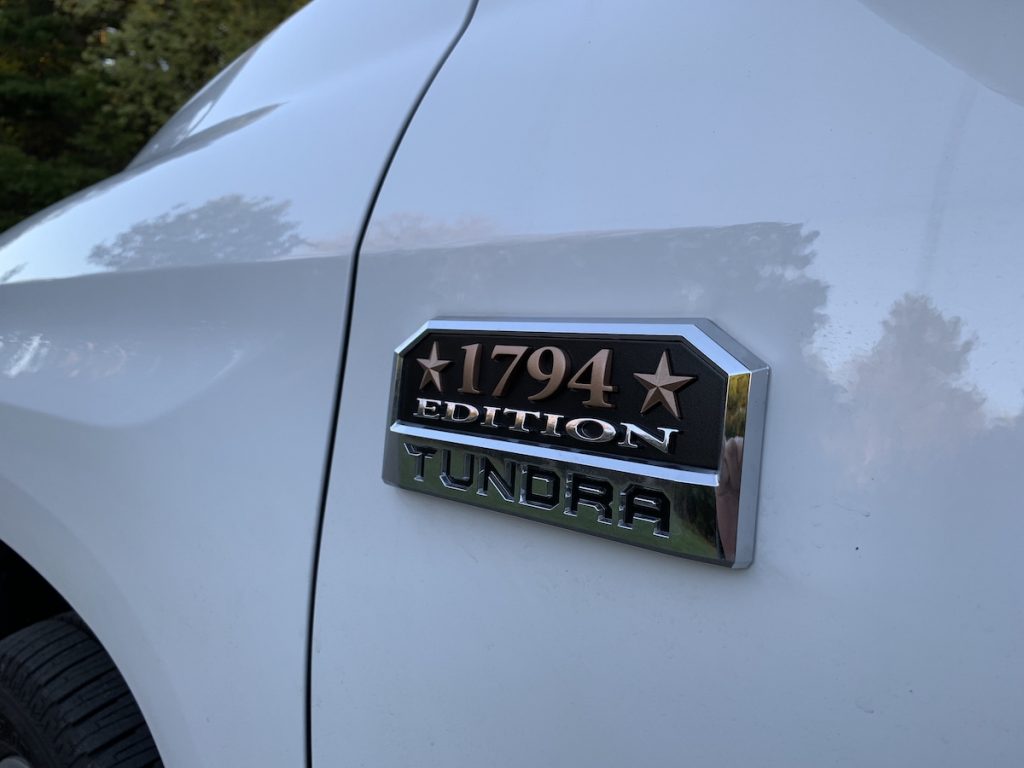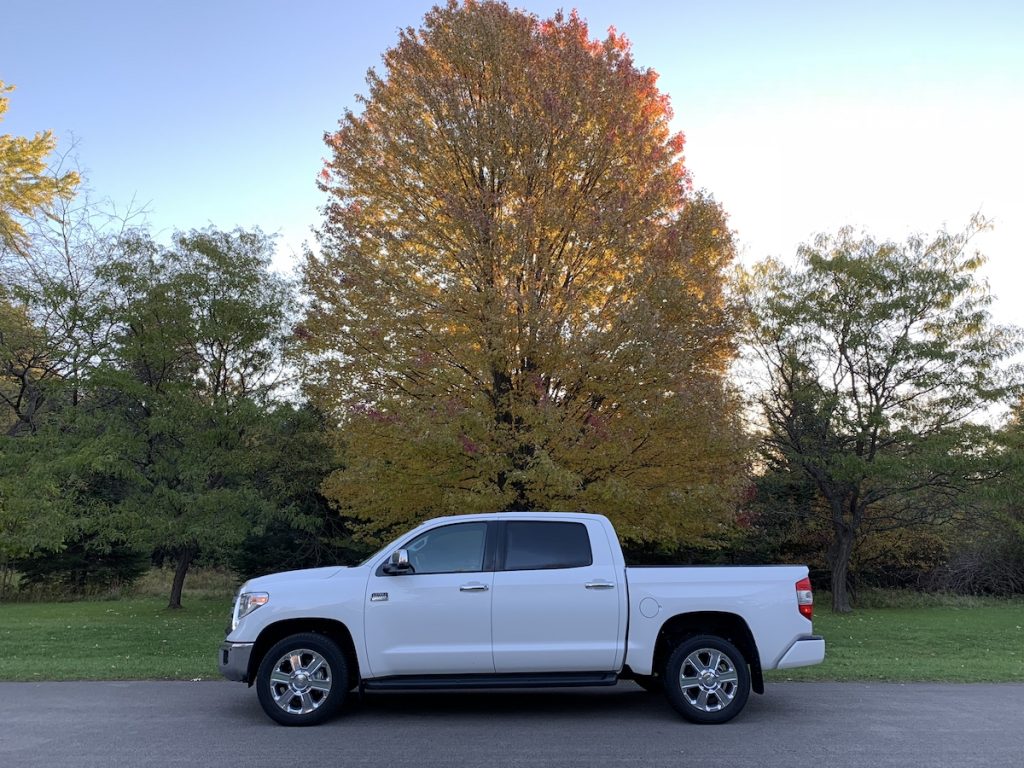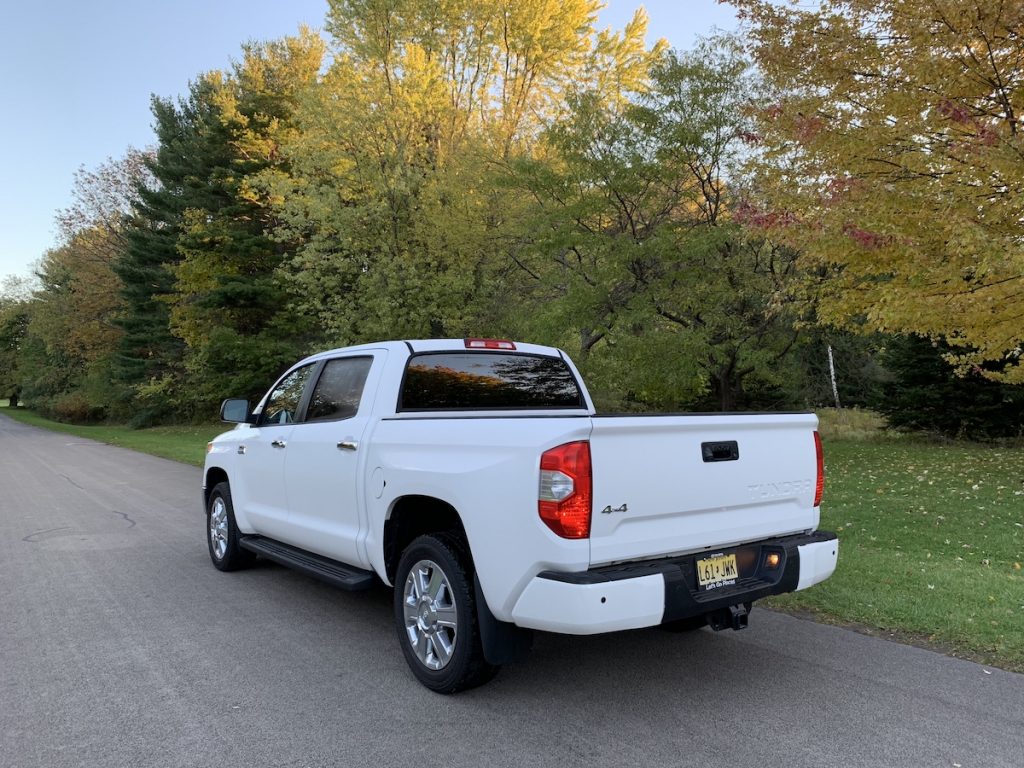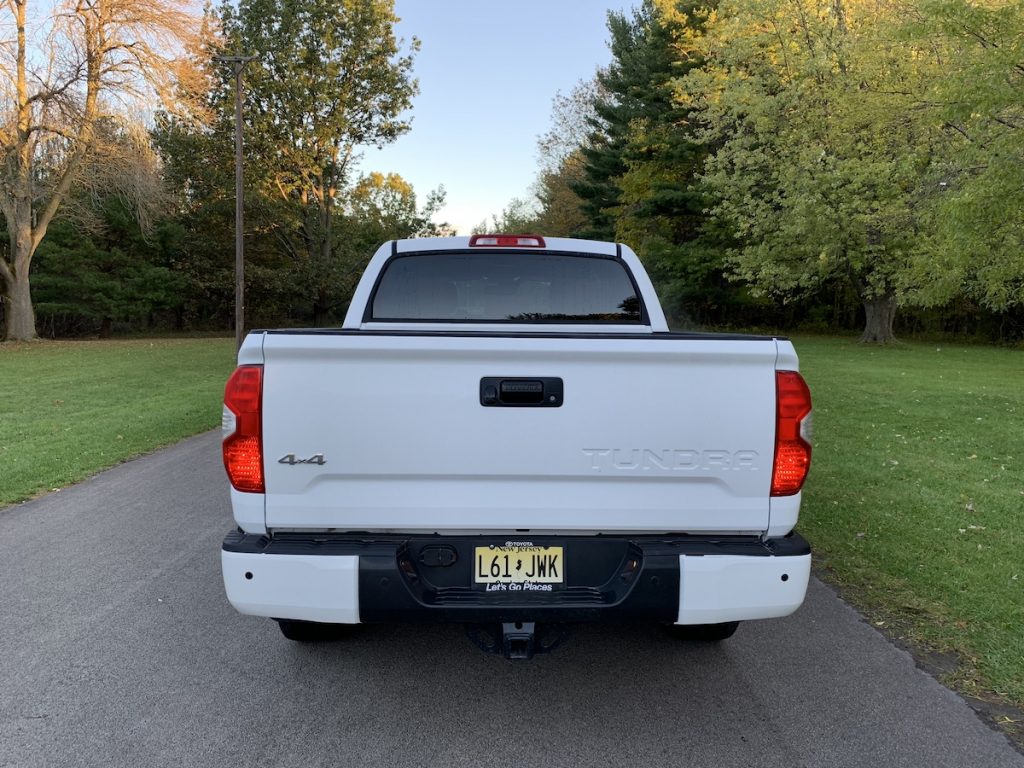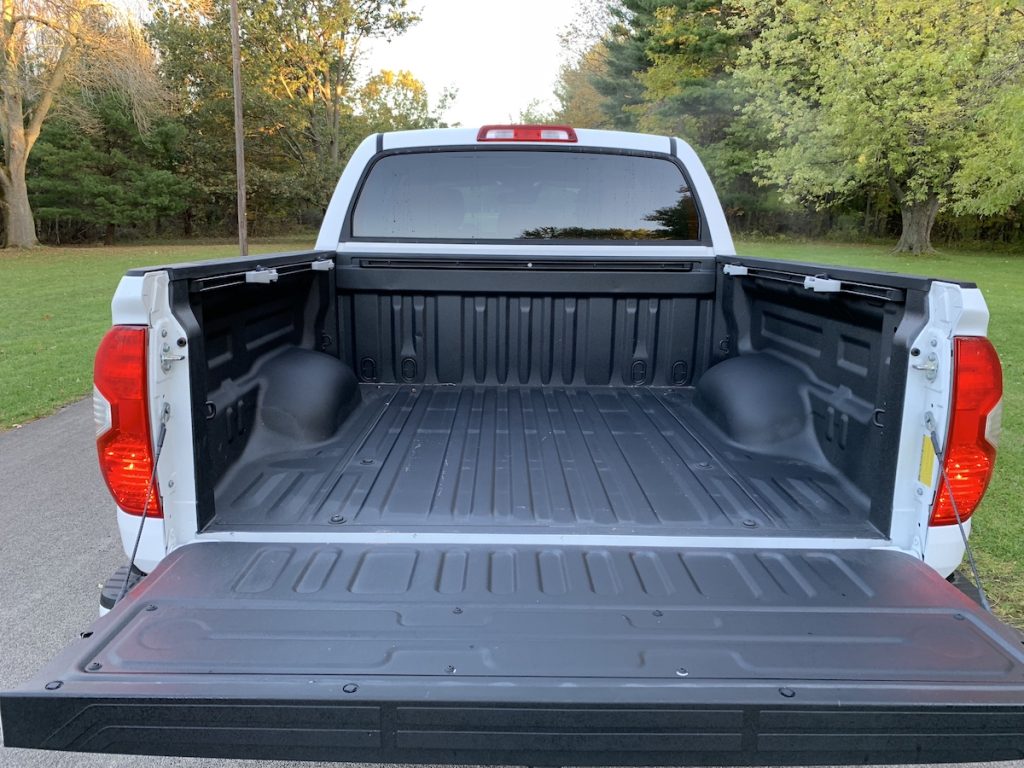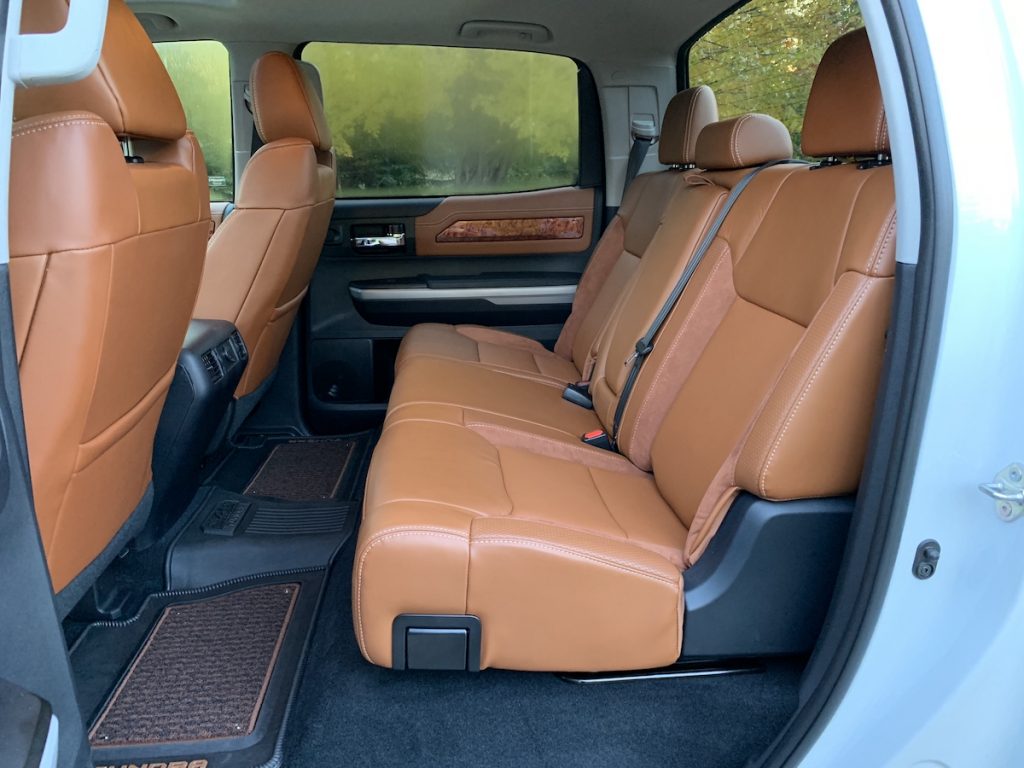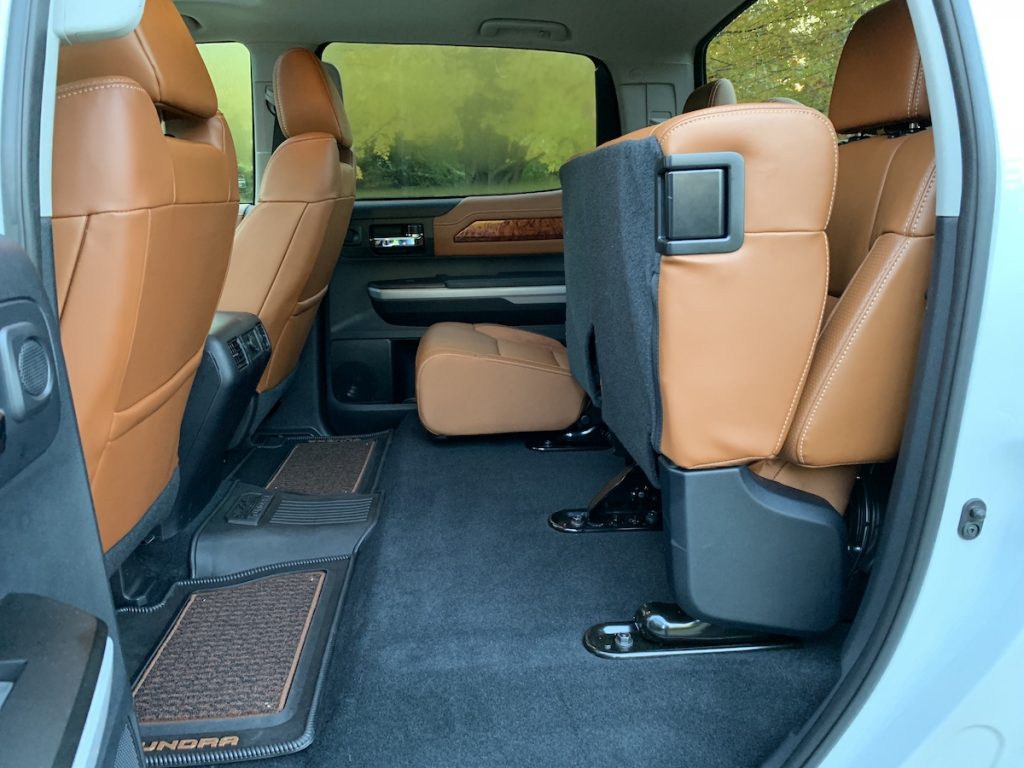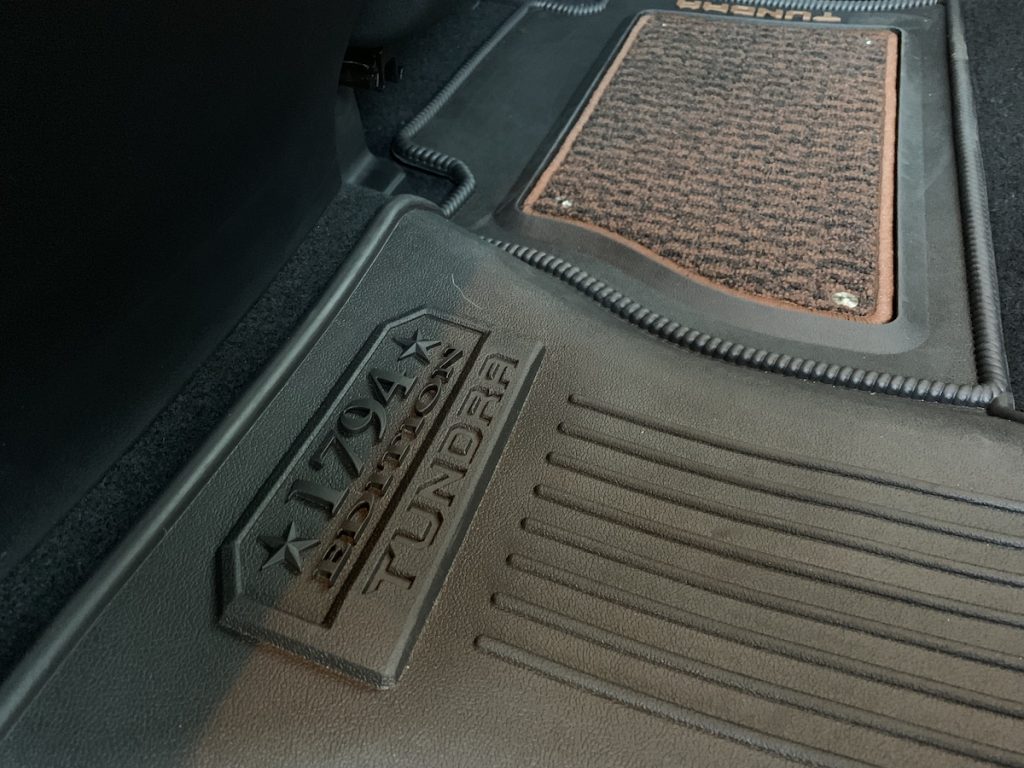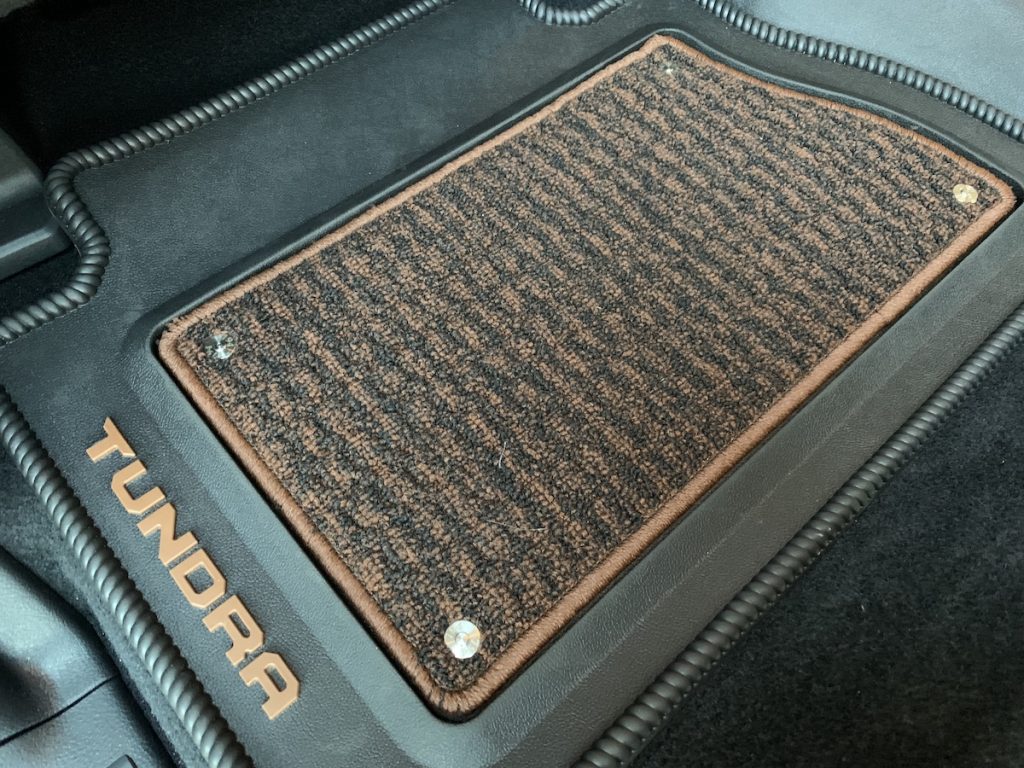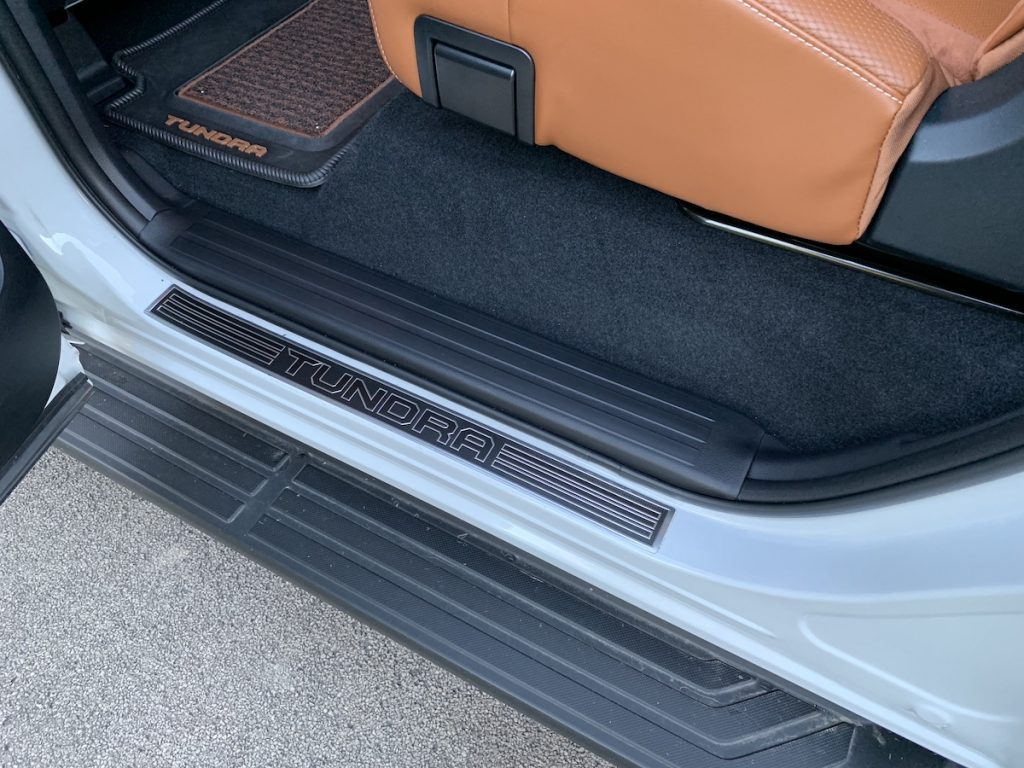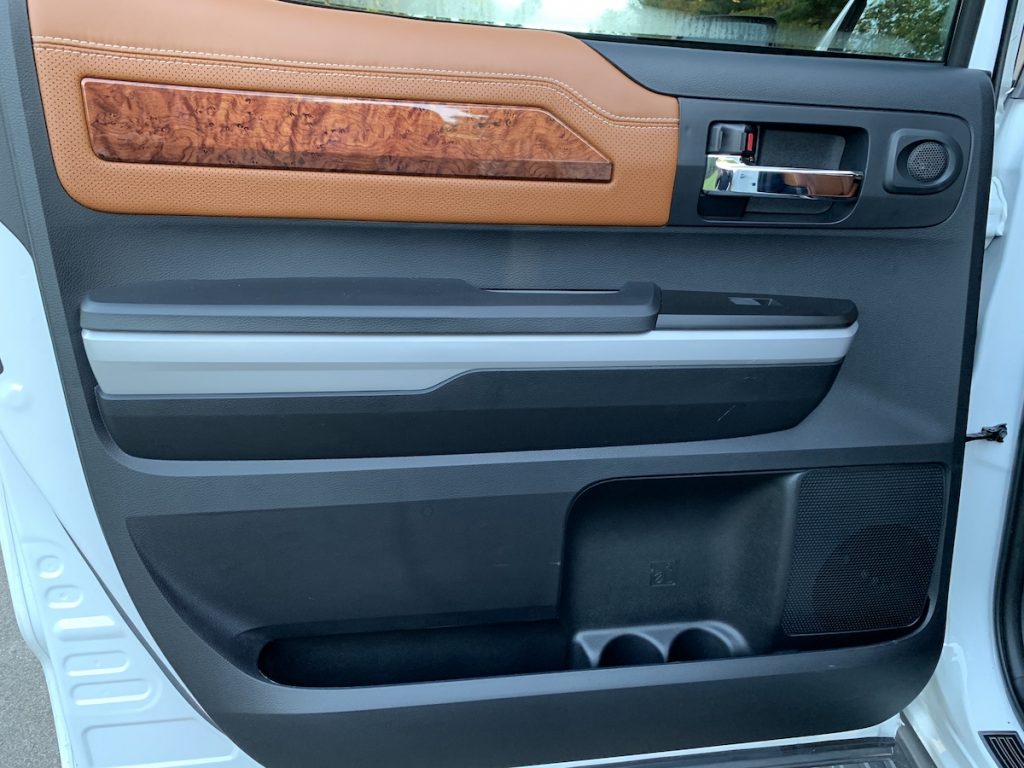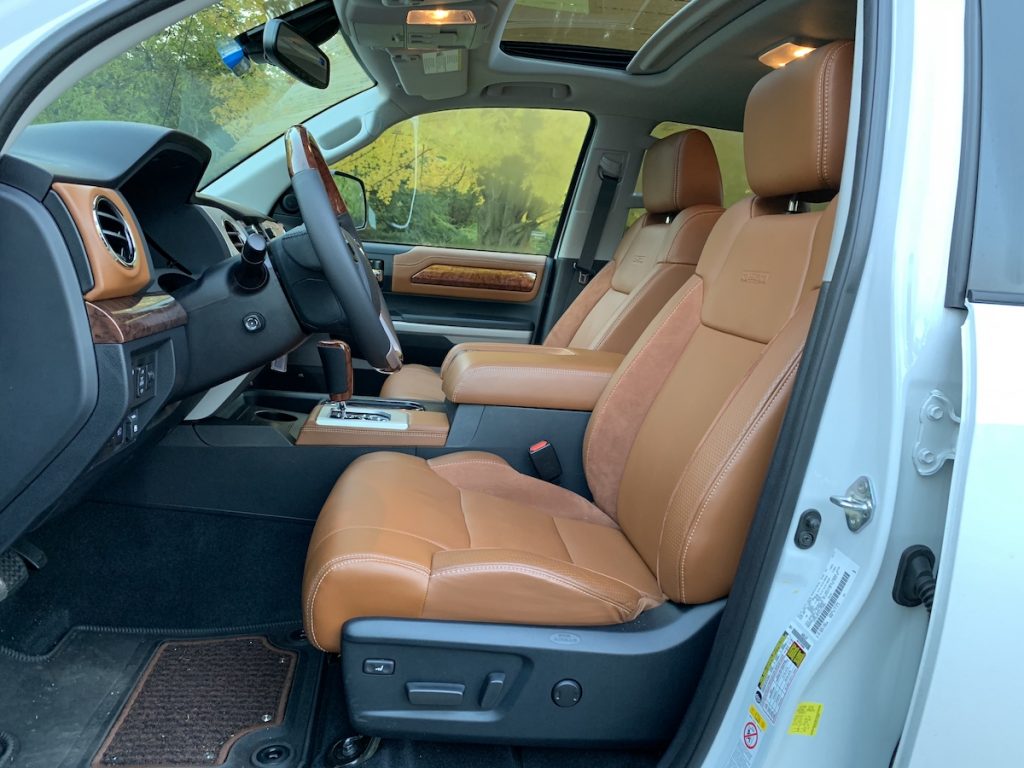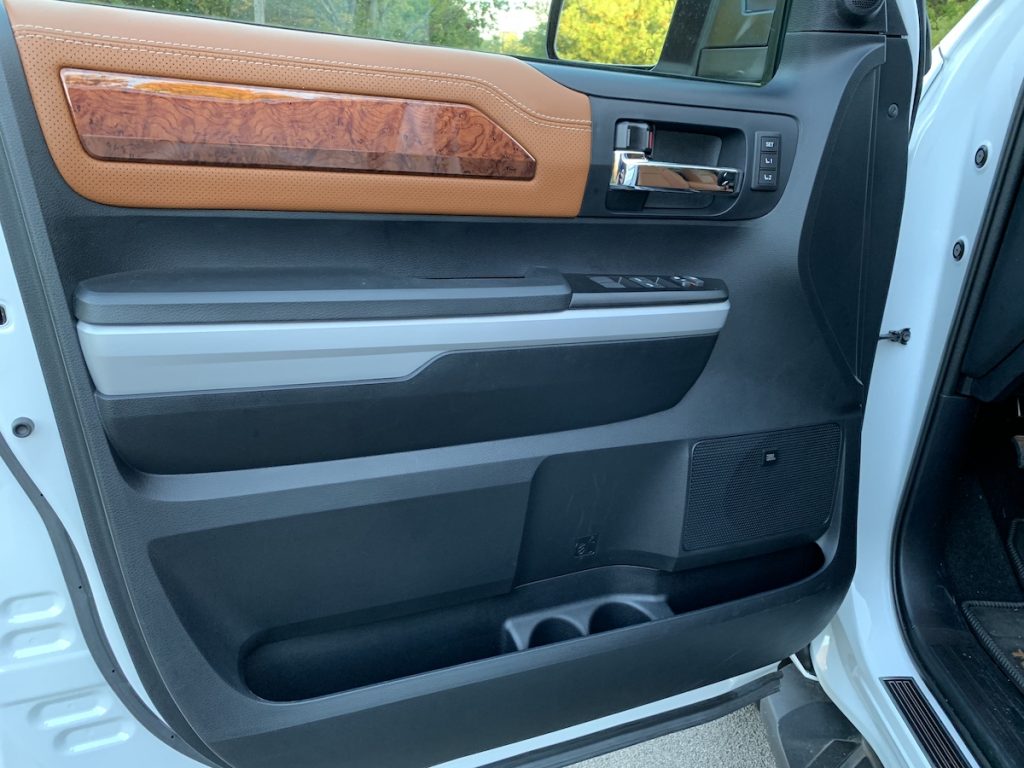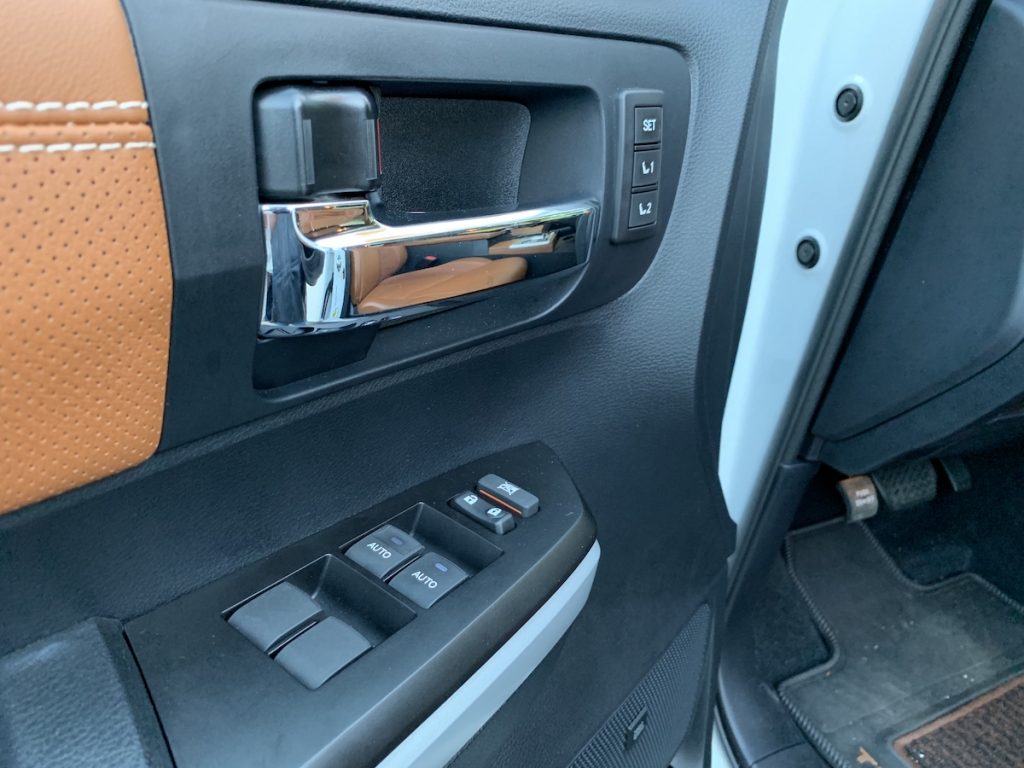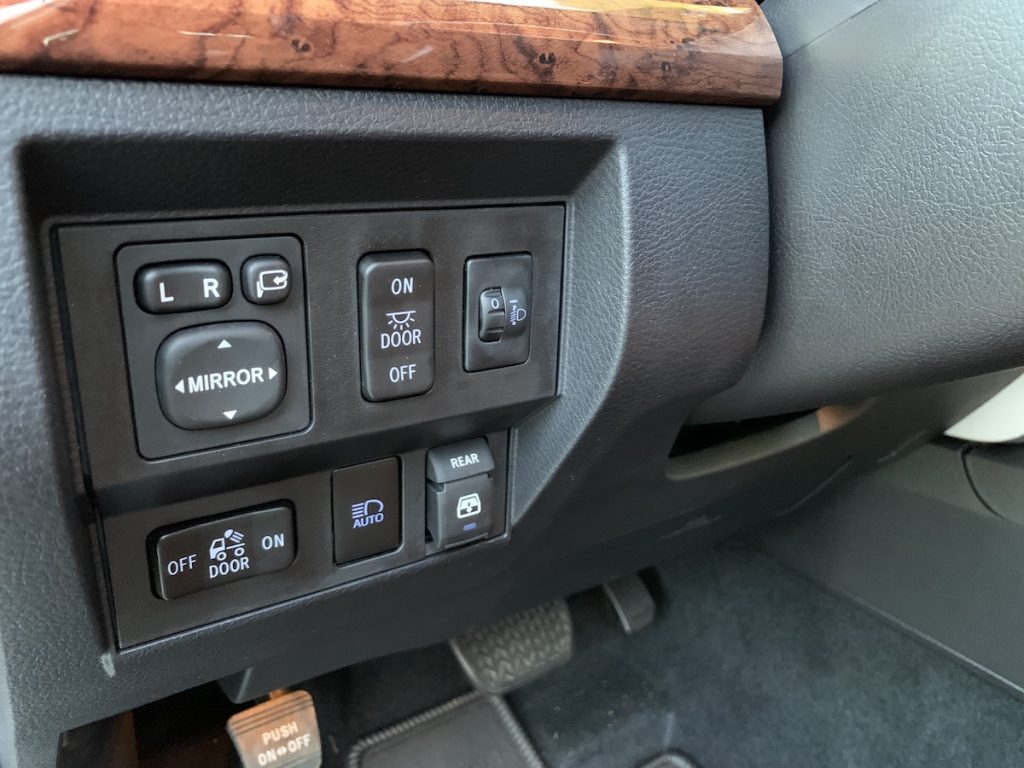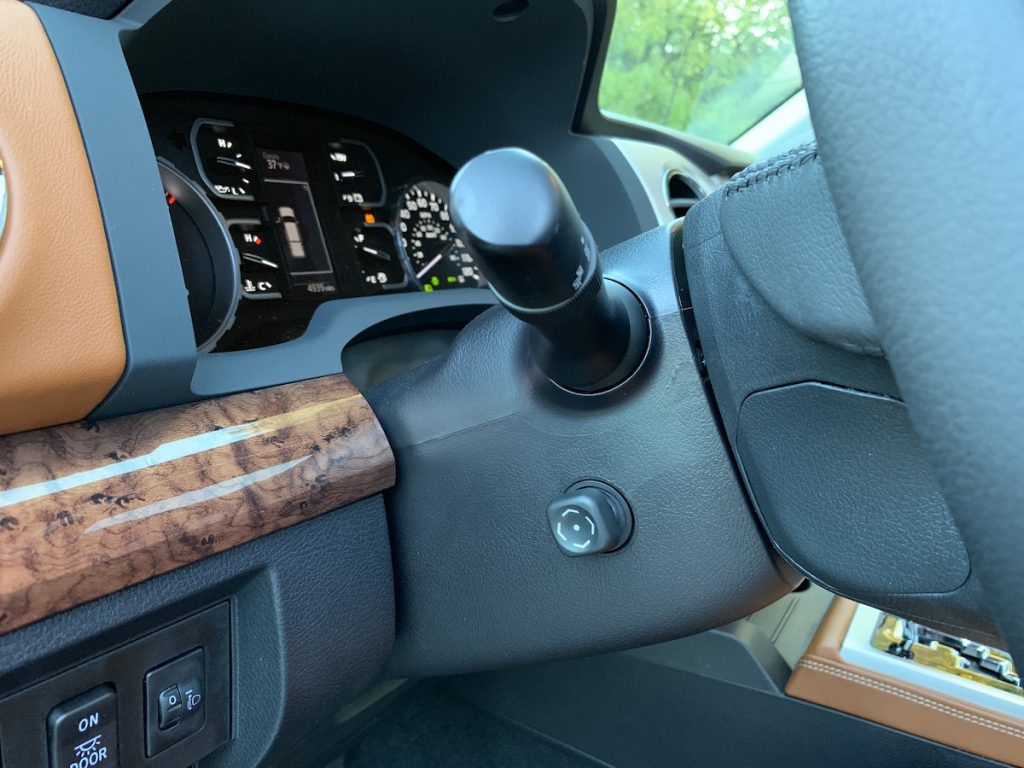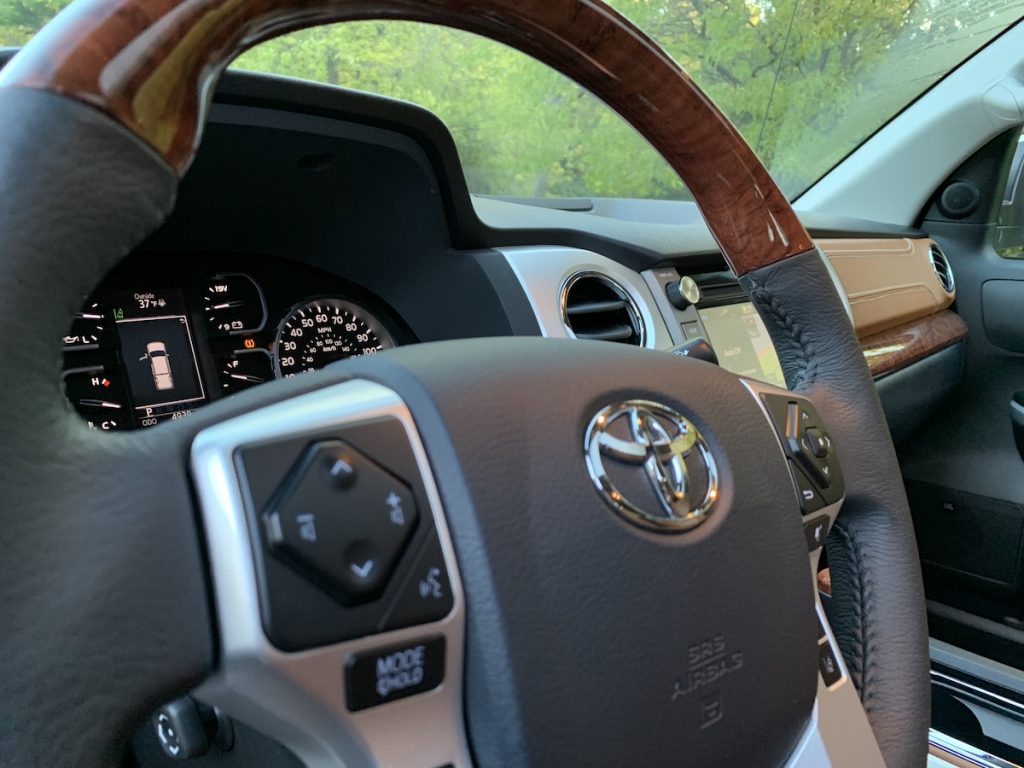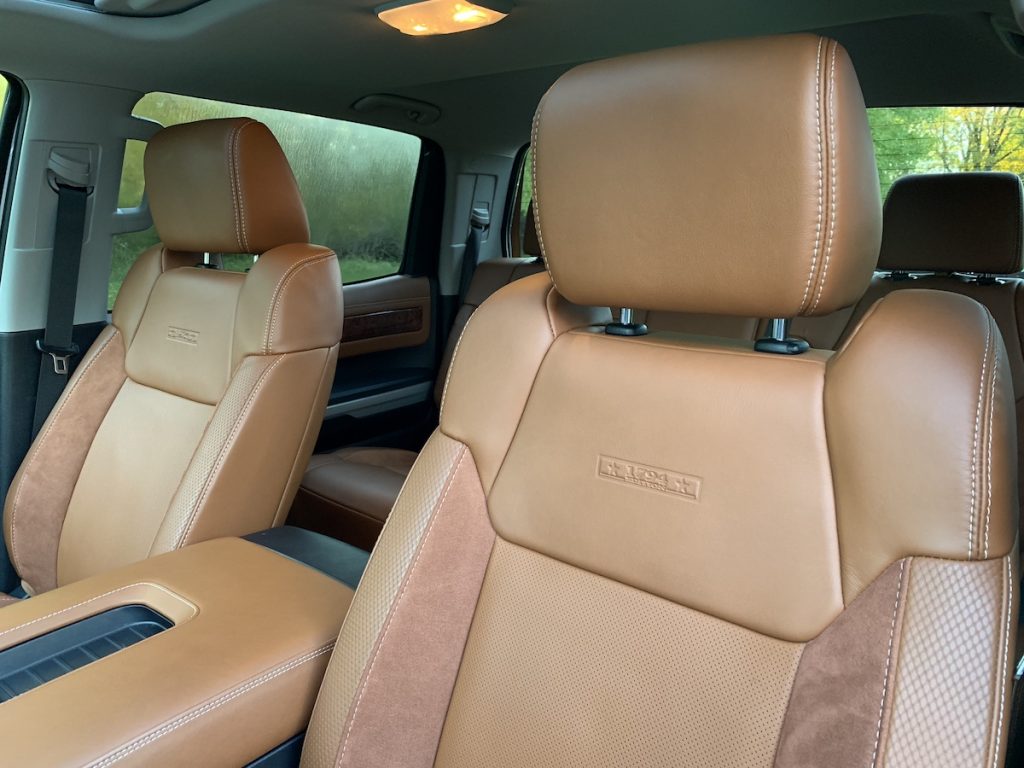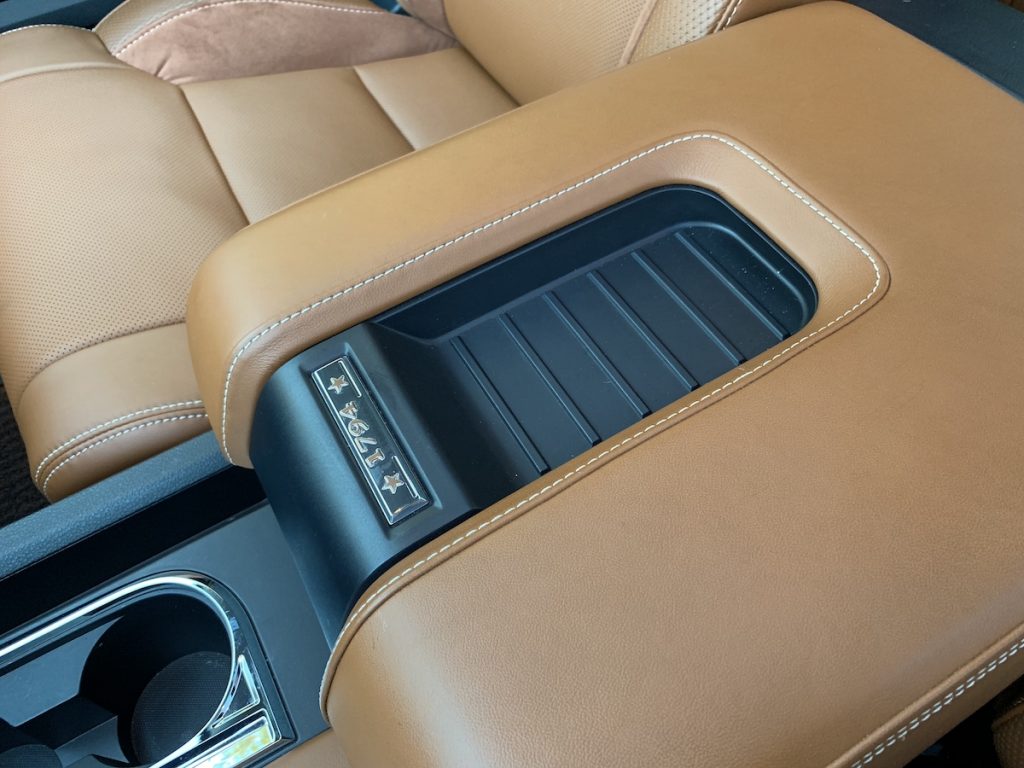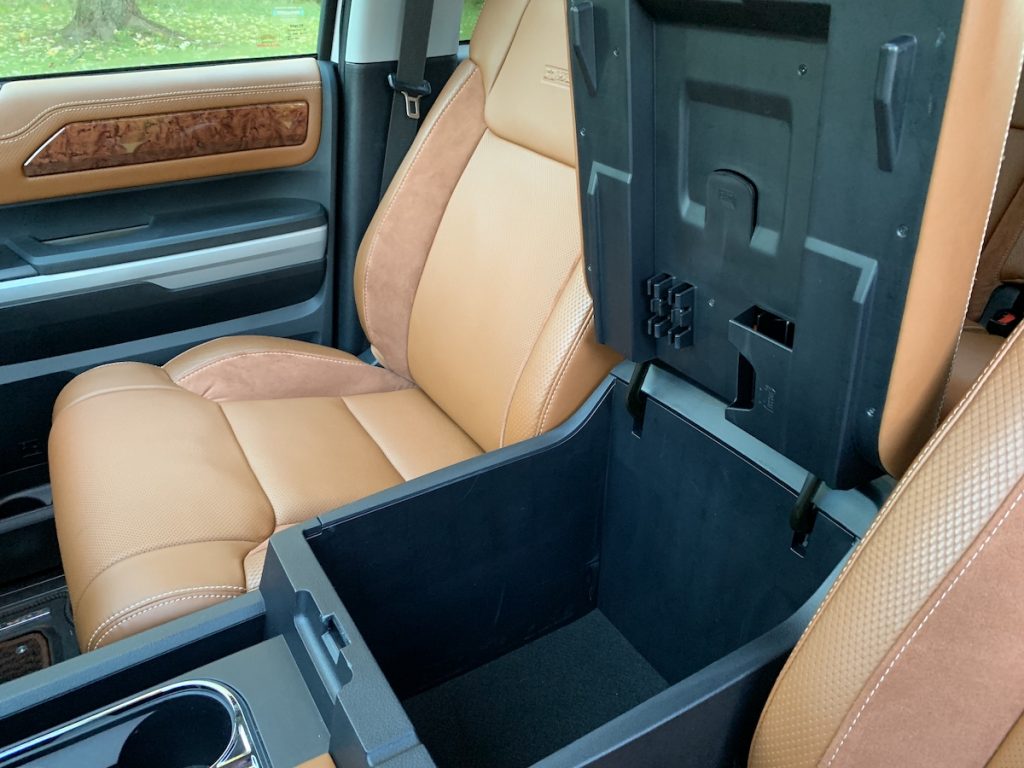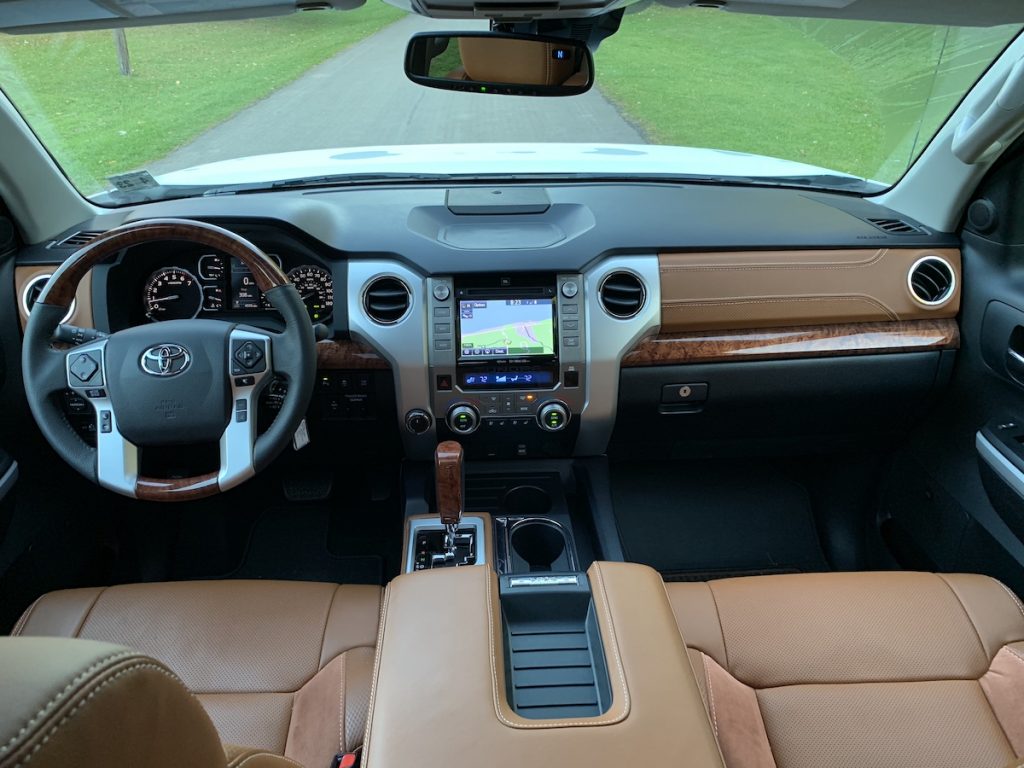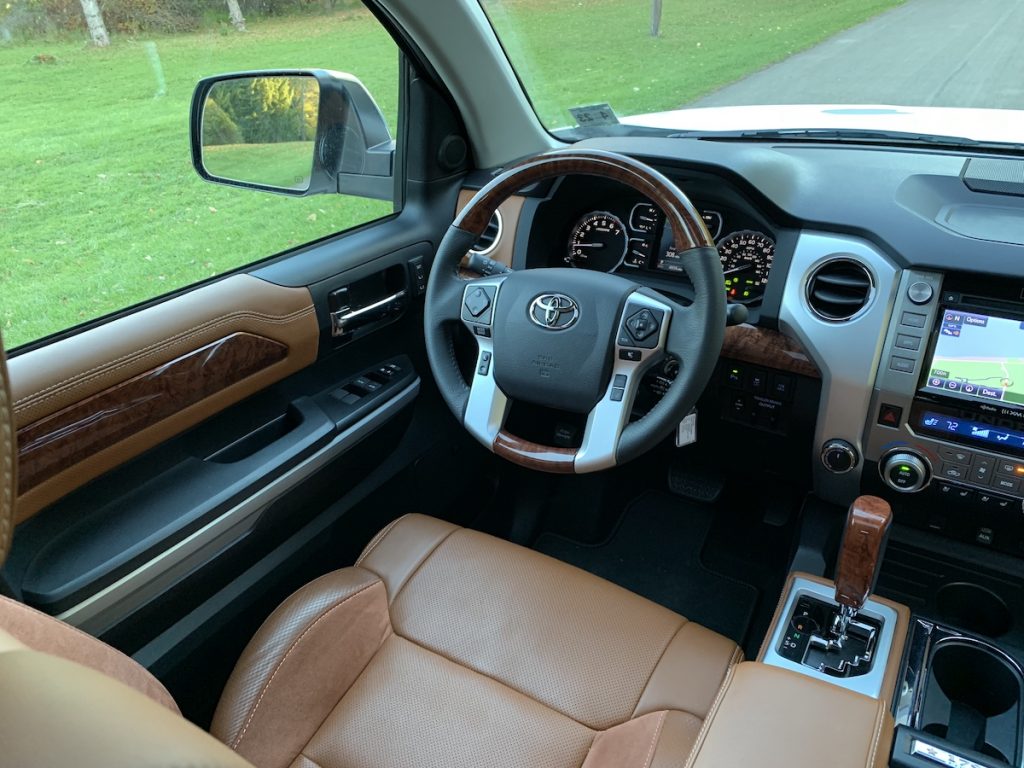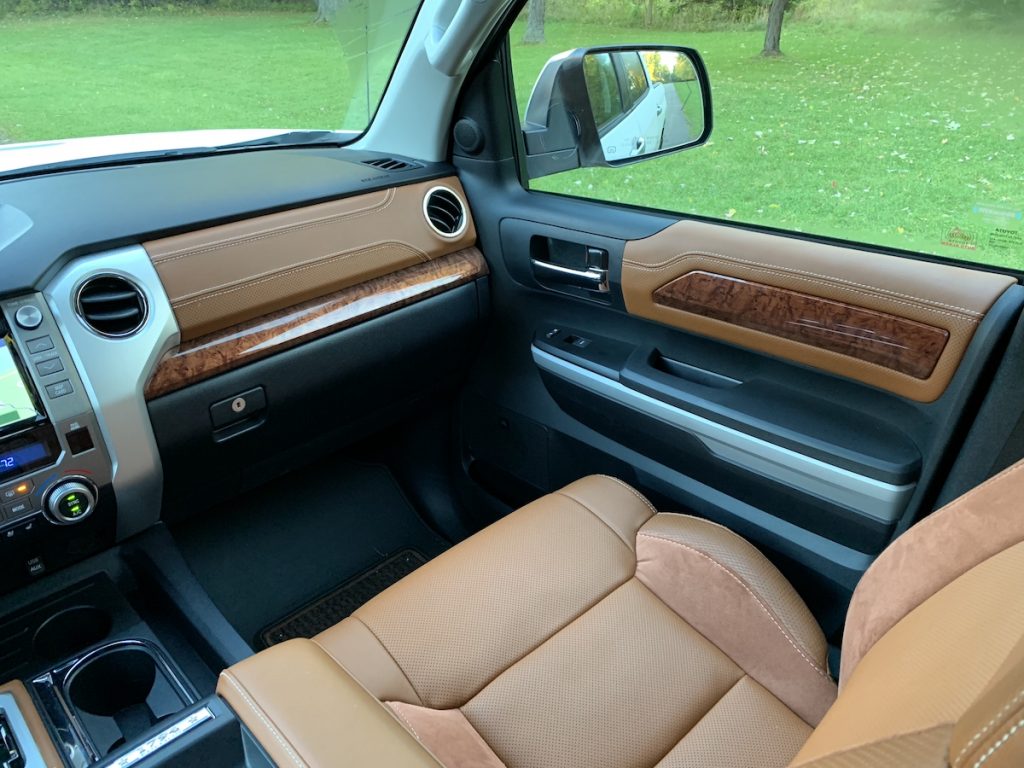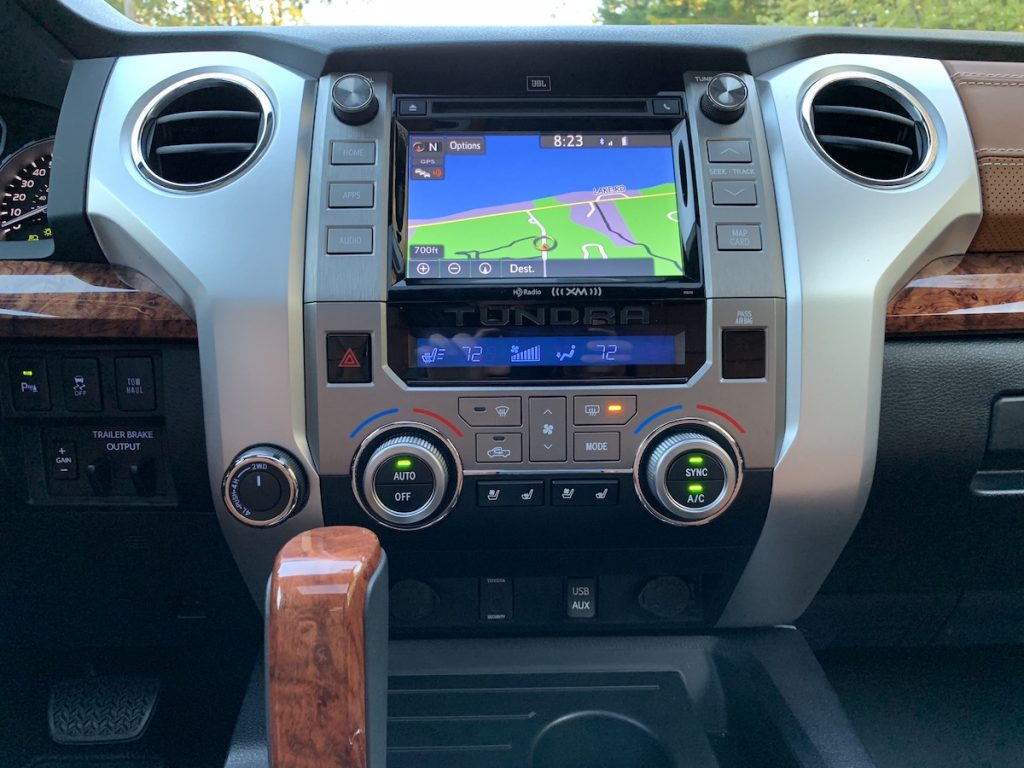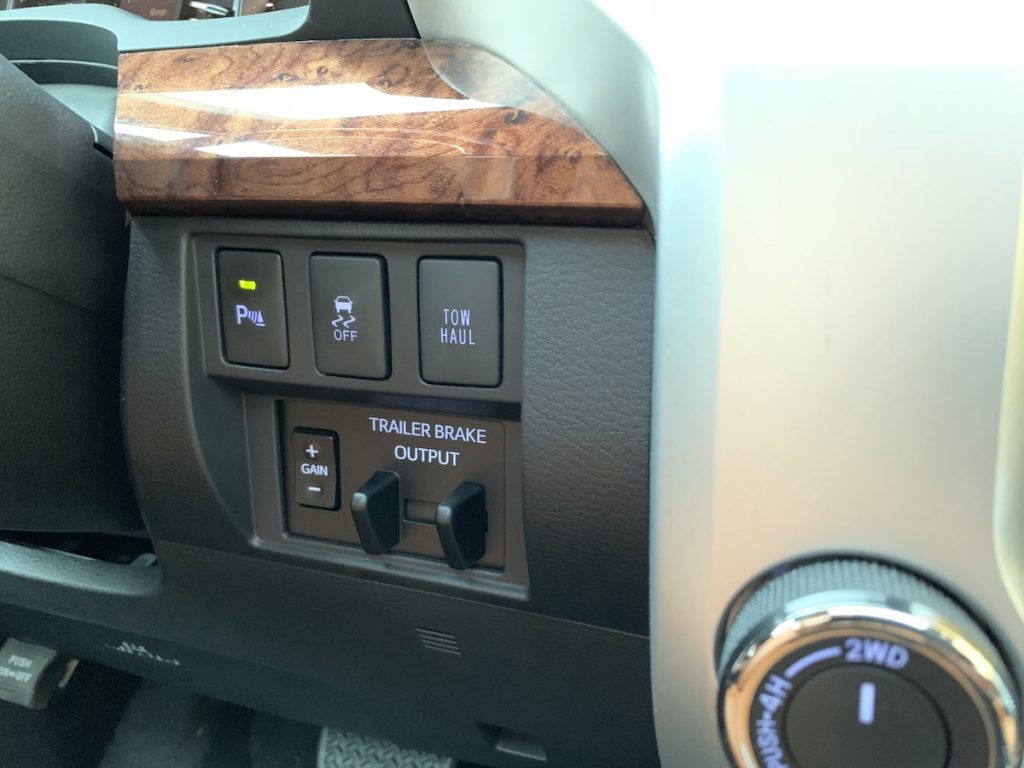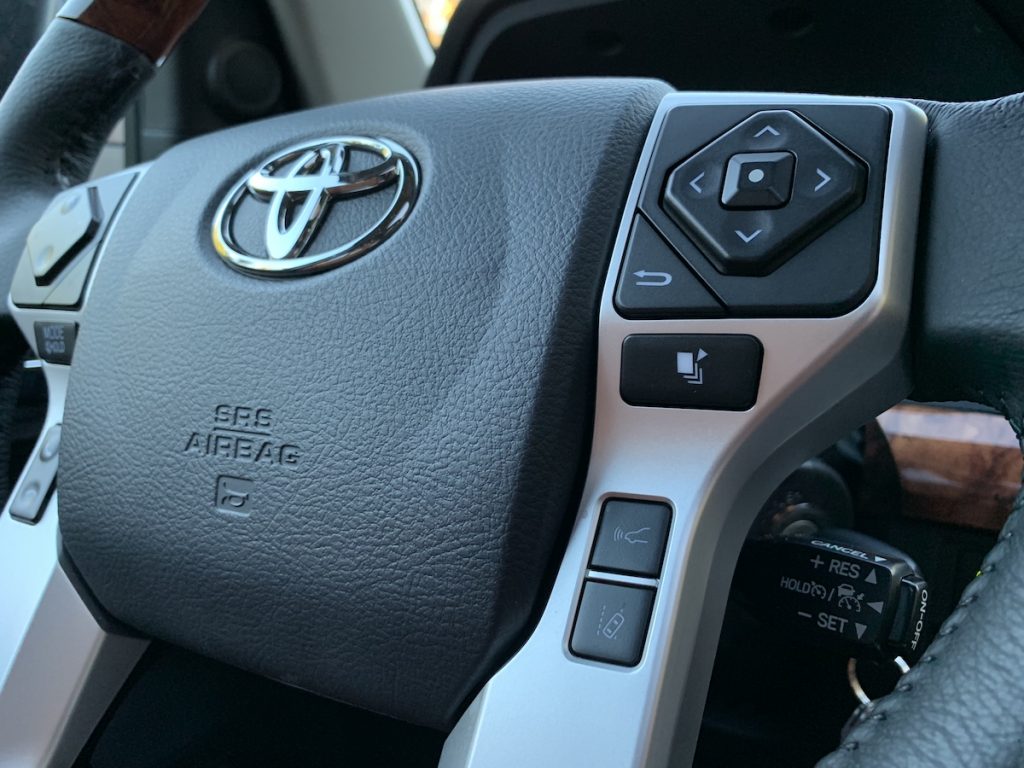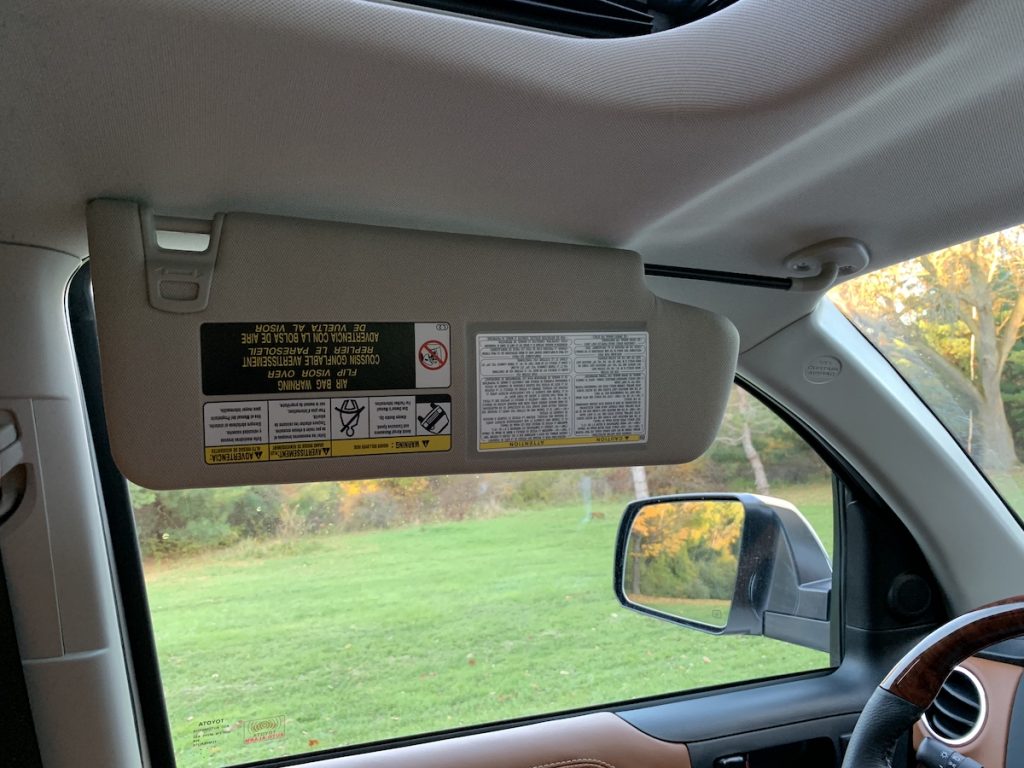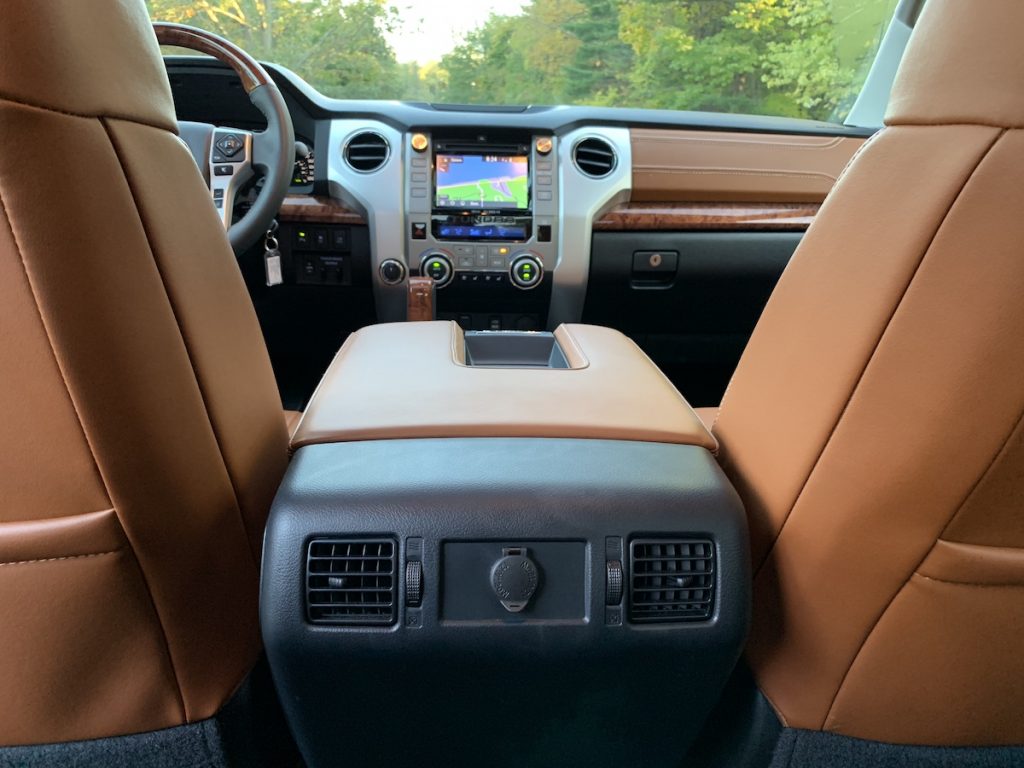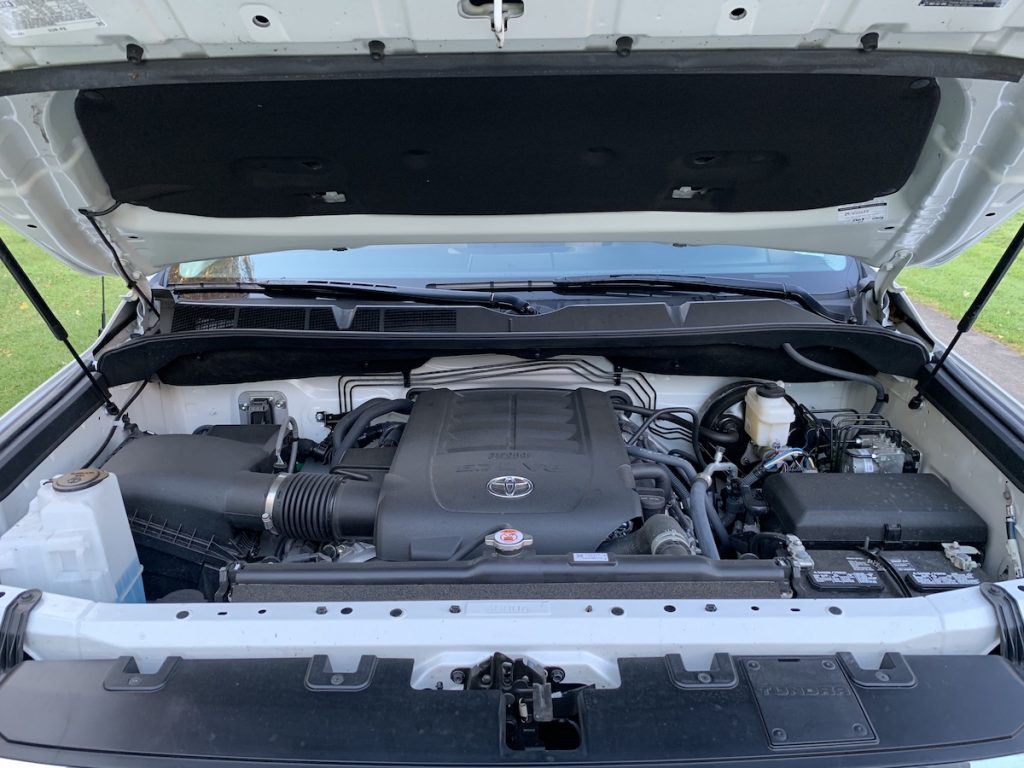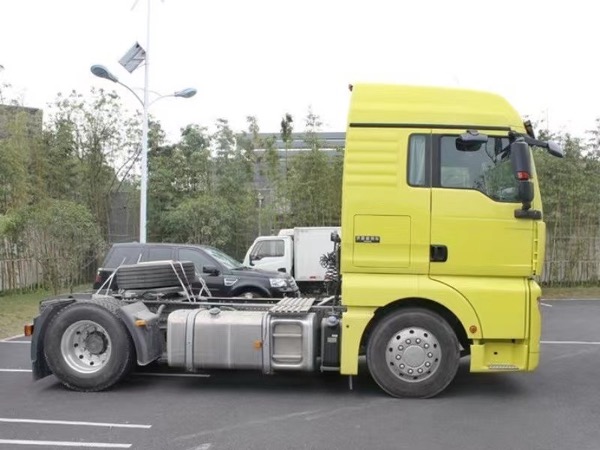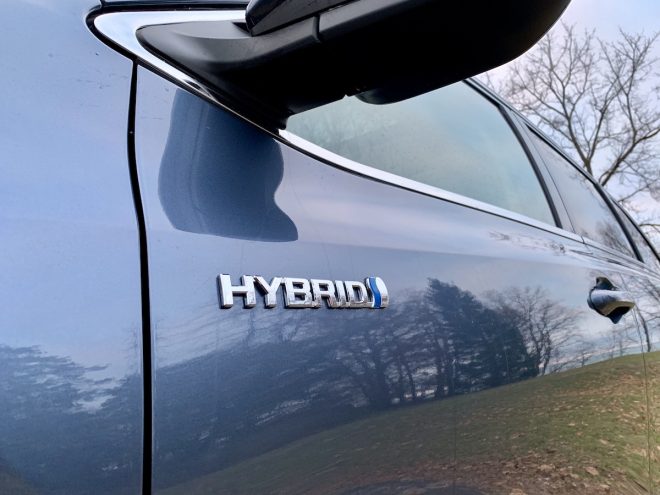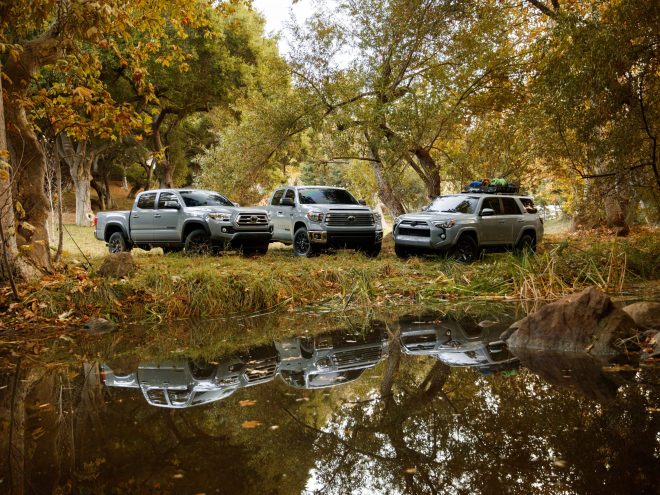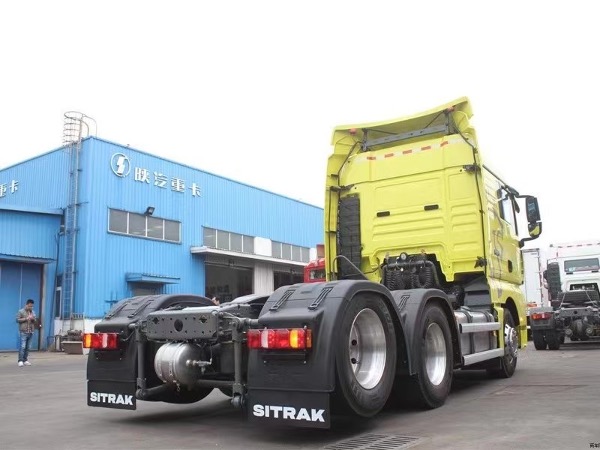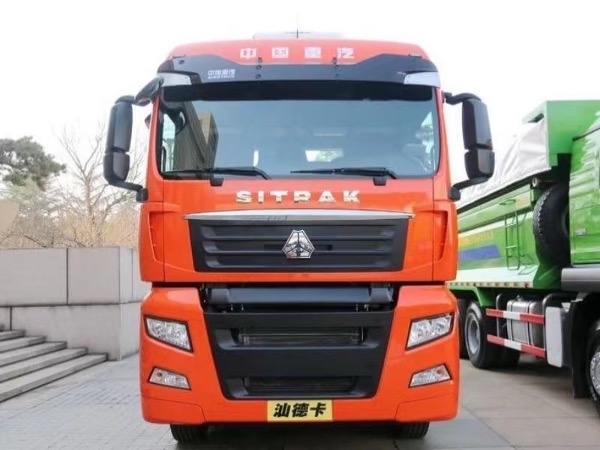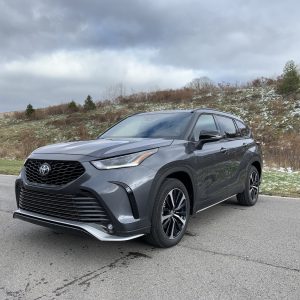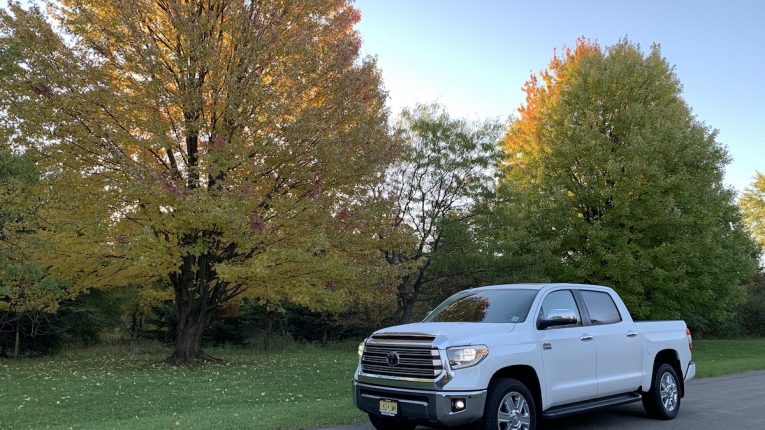
Road Test: 2018 Toyota Tundra 1794 CrewMax
Toyota’s Texas-assembled full-size pickup truck, the 2018 Tundra, keeps on truckin’ this year with an updated face and gains an important upgrade on the safety front with standard collision avoidance/mitigation. The advanced Toyota Safety Sense-P system is now standard on all Tundra grades (yes!) and it includes radar cruise control for easier highway driving.
Toyota dropped the Regular Cab models for this year, leaving an all-four-door lineup with the Double Cab and the extra-roomy CrewMax models.
Assembled in San Antonio, the 2018 Toyota Tundra lives up to the state’s “bigness” by offering a plethora of possible configurations, plus a towing capacity up to 10,200 pounds.
Pickup drivers like to personalize their trucks, but there’s not much to do here. All of the exterior lights are LED, and our 1794 Edition wears a slick billet-style grille.
The CrewMax’s longer cab, larger rear doors, and shorter 5.5-foot bed make for a limo-like 42.3 inches of rear seat legroom. The rear seats can be folded up for additional cargo carrying, and we love the power vertical sliding rear window for letting air out on warm days.
Tundra’s bed is 22.2 inches deep and, when properly equipped, offers a payload capacity of up to 1,730 pounds. The lockable easy-lower-and-lift tailgate lowers slowly with no slam and can easily be removed. Carrying larger items is a cinch with the available deck rail system and a spray-in bed liner.
Under the hood, the 5.7-liter generates 381 HP and 401 lb.-ft. of torque at a low 3,600 rpm. Toyota’s i-Force V8 utilizes an aluminum cylinder block, double overhead-cam heads with four valves per cylinder, Dual Independent Variable Valve Timing with intelligence (VVT-i), and an Acoustic Control Induction System for a broad torque curve. Power is routed through a 6-speed electronically controlled automatic transmission.
Fuel economy is EPA-rated at 13 mpg city, 17 highway, 14 combined, and we easily surpassed that averaging 16 in mixed driving then 19 mpg on a 60-mile highway drive.
The foundation of Tundra’s strength and 10,200-lb. max towing capacity (SAE J2807 towing standard compliant) is its TripleTech frame. “Triple” refers to the wide, full-boxed rails for the front portion, a reinforced C-channel under the cab and an open C-channel beneath the bed for strength, ride quality, and durability.
A one-piece towing receiver uses 12 high-strength bolts, integrating it into the frame. The 5.7-liter’s Tow Package upgrades Tundra’s cooling and electrical systems with integrated engine and transmission oil coolers, and heavy-duty battery and alternator.
The Tow Package’s TOW/HAUL mode adjusts throttle sensitivity and transmission shift control, favoring and holding lower gears when accelerating or decelerating to help enhance control and safety. A function of Vehicle Stability Control, Trailer Sway Control makes towing safer by counteracting handling forces that can cause trailer sway. The Tundra also comes with an integrated Trailer Brake Controller, and the driver can view its status on the multi-information display screen.
The double A-arm front suspension uses coil-over spring-shock units, and a front-mounted steering rack enhances steering feel and response while decreasing the overall turning diameter. We found Tundra easy to maneuver but still very truck-like in ride quality when the bed isn’t loaded.
In the rear suspension, staggered shocks mounted outboard of the trapezoidal-mounted leaf springs help improve dampening efficiency to better control the rear axle. Spring rates are tuned to help provide a flat vehicle stance when fully loaded.
According to Toyota, Tundra 2WD models use the Vehicle Stability Control (VSC) and traction control (TRAC) systems to enhance grip on or off-road. The system also incorporates Automatic Limited-Slip Differential (Auto-LSD), which provides better performance in deep sand or mud and on mixed-friction surfaces because it doesn’t restrict engine power. Compared to a conventional mechanical limited slip differential, the Auto-LSD system is often more responsive and has better wear characteristics, since it utilizes the vehicles brakes to limit wheel spin.
Tundra 4×4 models use the on-demand, electronically controlled 4WDemand part-time 4WD system featuring a six-pinion planetary reduction gear set to provide 4×2, 4×4 Hi, and 4×4 Lo ranges. The driver gets to easily select the drive mode using a dial on the dash. With 4WDemand, Active Traction Control (A-TRAC) operates like Auto-LSD, allowing full, unrestricted engine output, transferring power to the wheel with the most traction on both the front and rear axles.
The driver can adjust traction capability as needed using the mode selector. In normal mode, VSC and TRAC function to help enable traction and control capability. TRAC Off and Auto-LSD modes activate Auto-LSD to help extricate the Tundra from extreme conditions by allowing full, unrestricted engine output and transferring power to the wheel with the most traction. The VSC Off mode turns off all three systems.
All of this tech and power is funneled to four beautiful 20″ wheels.
Sitting in the 1794 Edition Tundra is unlike any other truck. Luxury and spaciousness are as grand as Texas. The driver’s seat has a power thigh extender to fit any driver.
Gauges are grouped in a clear, easy-to-see design, and there’s a color center-mounted multi-information display screen. The dash’s large knobs can be operated wearing gloves, and the console offers multiple storage areas for a variety of things.
We’re glad the windshield wiper de-icer, front and rear mudguards, power windows and door locks, and heated and power outside mirrors are standard on all trims, not just the top-end tester we evaluated.
Speaking of our tester, you must be wondering where 1794 comes from. 1794 Edition commemorates the year that a sprawling ranch was founded on the site of Toyota’s Tundra plant in San Antonio. It reflects a western lifestyle theme with its warm saddle brown premium leather-trimmed seating with embossed leather and ultra-suede accents. Matching soft-touch materials also accent the shift console, the front and rear door trim, and the instrument panel. Matte-finish wood-styled trim adds a touch of elegance.
A special edition wouldn’t be complete without added luxuries like a 12-way power driver’s seat with memory and a 4-way power passenger’s seat, both with heat and ventilation. The JBL system is 12-speakers and sounds fantastic, and the touch-screen Entune system comes with nav but no Apple CarPlay or Android Auto (yet).
Summer nights are better with the power moonroof and auto-dimming rearview mirror with compass, including HomeLink. Daily driving is easier with Blind Spot Monitor with Rear Cross Traffic Alert and front and rear parking sonar sensors.
BSM is designed to detect vehicles in the Tundra’s blind spot while Rear Cross Traffic Alert feature warns drivers of cross traffic via indicator lights in the side-view mirrors, along with an audible warning buzzer while backing up.
The aforementioned Toyota Safety Sense P (TSS-P) assist system bundles cutting-edge active safety technologies including Pre-Collision with Pedestrian Detection function (PCS w/PD) featuring forward collision warning and Automatic Emergency Braking, Lane Departure Alert (LDA), Automatic High Beams (AHB), and Dynamic Radar Cruise Control (DRCC).
All the tech relies on input from various sensors, but the two doing all the “seeing” are the camera mounted behind the rearview mirror and looking down the road, and the radar module mounted behind the Toyota emblem in the grille.
The Pedestrian Detection function of Pre-collision System (PCS) detects a pedestrian ahead of the vehicle in certain conditions. When the system determines there is a possibility of collision it prompts the driver to brake with an audio and visual alert. If the driver notices the hazard and brakes, the system may provide additional braking force using Brake Assist. If the driver fails to brake in a set time and the system determines that the risk of collision with a pedestrian is extremely high, the system may automatically apply the brakes, reducing speed in order to help the driver avoid the collision or reduce the impact.
Lane Departure Alert (LDA) is designed to detect visible white and yellow lane markers in front of the vehicle and the vehicle’s position on the road. If the system determines that the vehicle is starting to unintentionally deviate from its lane, the system alerts the driver with an audio and visual alert. When the alerts occur, the driver must check the surrounding road situation and carefully operate the steering wheel to move the vehicle back to the center part of their lane.
On highways, Dynamic Radar Cruise Control (DRCC) functions similar to a conventional “constant speed” cruise control in that it helps vehicles travel at a consistent speed set by the driver, but this system adds a vehicle-to-vehicle distance control mode designed to assist the driver by adjusting vehicle speed (within a set range) to help maintain a pre-set distance to a preceding vehicle when the preceding vehicle is traveling at a lower speed. Once a vehicle speed is set by the driver, Dynamic Radar Cruise Control uses a front-grill mounted millimeter-wave radar and an in-vehicle camera designed to detect a preceding vehicle and help determine its distance.
We’re huge fans of Automatic High Beam (AHB) systems which help enhance forward visibility during nighttime driving. It detects the headlights of oncoming vehicles and the tail lights of vehicles ahead, and then automatically switches between high beams and low beams so as not to interfere with other drivers.
| Summary Scorecard (1-10) | |
| Ride and Handling | 6 |
| Braking | 8 |
| Powertrain and Fuel Economy | 7 |
| Noise | 7 |
| Headlights | 6 |
| Interior Fit and Finish | 10 |
| Seating | 10 |
| Visibility | 10 |
| Gauges and Controls | 8 |
| Infotainment | 6 |
| Crash-Avoidance | 9 |
| Total Score | 80 |
—
Make: Toyota
Model: Tundra
Trim Level: 1794 CrewMax
Engine: 5.7L V8
Transmission: 6-Speed Automatic
Options: Sunroof, Running Boards, 20″ Wheels
—
Base Price: $50,130
As-Tested Price: $52,730
